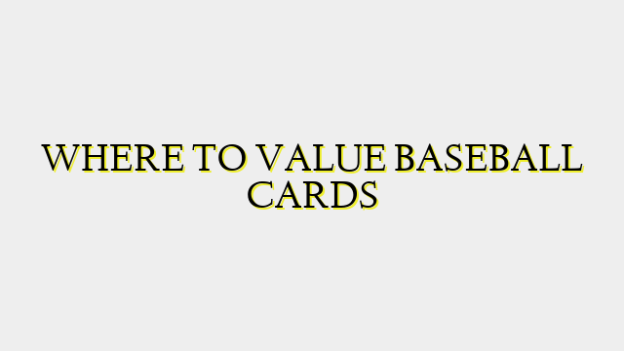There are several factors that determine the value of a baseball card. The most important things to consider when valuing a card are the player, the year it was printed, the card’s condition or grade, and any special characteristics.
Let’s start with the player. Generally, legendary or Hall of Fame players will have more valuable cards across the board. So cards featuring superstars like Babe Ruth, Mickey Mantle, Mike Trout, etc. will usually carry a premium. Rookie cards or early career cards of stars can be extremely valuable since they represent getting in on a player early. You’ll also want to consider how good statistically the player was and if they have any special accomplishments like MVP awards, World Series rings, record holders.
The year the card was printed is also very important. Older cards from the early 20th century through the 1950s are nearly always going to be worth more due to their collectibility as antique or vintage pieces of memorabilia. Within certain sets, the first few years of print runs may be worth more too if the player became a star. Also, some years of certain sets are scarcer than others for various reasons which drives up value.
When it comes to condition, this has a huge impact on price. The main grading scales used in the hobby are the 1-10 scale from Professional Sports Authenticator (PSA) and Beckett Grading Service (BGS). Getting a card professionally graded is very important. Higher grades of 8, 9, or 10 can increase a card’s value tremendously compared to a lower graded 4, 5, or 6. Even tiny flaws or imperfections can drop a grade. So near-mint to mint condition cards hold onto value best.
Beyond just the basic card, special characteristics can provide value too. Parallel or short-print inserts within sets may be significantly rarer which drives up scarcity and price. Autographed cards “autographs” and memorabilia cards “relic” pieces carrying swatches are always going to be worth multiples over a basic card, all else being equal. 1-of-1 printing plates, game-used gear, rare serial numbers editions can fetch premium prices at auction.
When it comes to actually assigning a dollar value, there are reference guides like the Beckett Baseball Card Price Guide that provide baseline estimated values based on player, year, set, and condition. The real ultimate market price is what someone is willing to pay for it. So recent sale comps from reputable sources like eBay, Heritage Auctions, Goldin Auctions are a better indicator. Premium auction houses tend to see the highest prices. Private dealers can also give you a reasonable offer after personally examining the card. Overall condition and special characteristics may also influence the final price versus a general guide amount.
There are also factors outside a card’s intrinsic characteristics that impact value long-term. The overall collectibles market and demand cycles affect pricing trends over time. Economic conditions, popularity of the player/team, and the overall size of the hobby also influence long-term appreciation or depreciation. Storing the card protected and keeping it in top condition helps retain or increase its worth better than one that is worn or abused over the years too.
So in summary – consider the player, year, set, grade/condition, and special characteristics when valuing a baseball card. Consult references and recent sold prices for true market value. Take care of the cards long-term storage to maximize future financial potential as an investment or collectible. With a bit of research and understanding these core factors, you’ll have the knowledge to start properly assessing the estimated or desired value for any baseball card in your collection.




